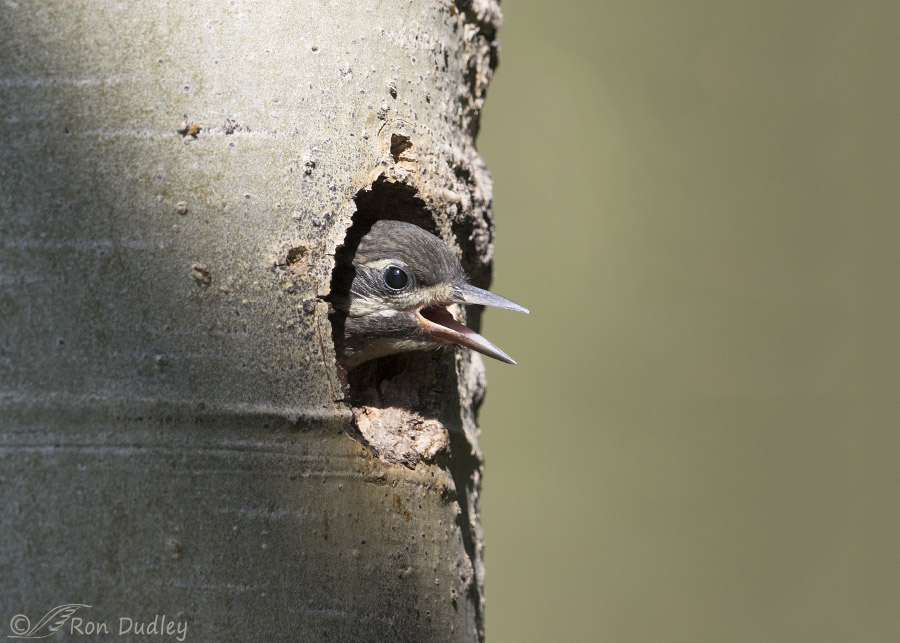I was surprised by how quickly this sapsucker chick’s behavior changed.
1/640, f/6.3, ISO 400, Canon 7D Mark II, Canon EF 500mm f/4L IS II USM + EF 1.4 III Extender, an annoying branch removed, not baited, set up or called in
Recently I spent many hours over four consecutive days photographing (and attempting to photograph) nesting Red-naped Sapsuckers in Idaho’s Targhee National Forest. Surprisingly there was only one youngster in the nest cavity. I’ve photographed nesting sapsuckers on several previous occasions and one of the difficulties has always been predicting when the chicks would be old enough to poke their heads out of the nest cavity in anticipation of food. Obviously, getting both the adult and the youngster in the photo makes for a more interesting image and I’ve often wondered how long they do it before they fledge – long drives to an already abandoned nest tree just aren’t very productive.
But on this trip I was camping close to the sapsuckers so it was an opportunity to learn how fast those behaviors develop by visiting the nest every day. This is what I learned from these particular birds:
- Day 1 – The chick inside the cavity was calling for food constantly (to the point of annoyance) but even when the adults appeared at the cavity entrance with a snack I never once got a glimpse of any part of the youngster. It stayed completely inside the cavity and the adult had to reach far inside to give it food (mostly ants and a few other insects).
- Day 2 – The chick often stuck its beak far enough out that I could see the end of it – but just barely. I could never see any part of its face, only its beak.
- Day 3 – Nearly every time a parent brought in food the chick poked some of its head out of the cavity to receive the snack. This was the first day I was actually able to get the youngster’s eye in any of my photographs.
- Day 4 – The chick often kept its head mostly out of the cavity as it eagerly awaited a food delivery, even when neither adult was nearby. And when an adult did arrive the youngster was very aggressive at getting the food – to the point that on several occasions it obviously surprised and annoyed the parent. This photo was taken on day 4.
- Day 5 – When I arrived at the nest tree all was (blessedly) quiet. The chick had fledged and was gone.
I was disappointed that the chick had fledged so quickly but this knowledge will be helpful in the future. Here in Utah I have to drive many miles to get to reliable sapsucker nesting habitat and knowing what I know now will help me plan those trips accordingly.
It’s a waste of time, money and gas to make a long trip to a nest tree only to find it abandoned. Perhaps some of my readers who are bird photographers will also find this information useful.
Ron


